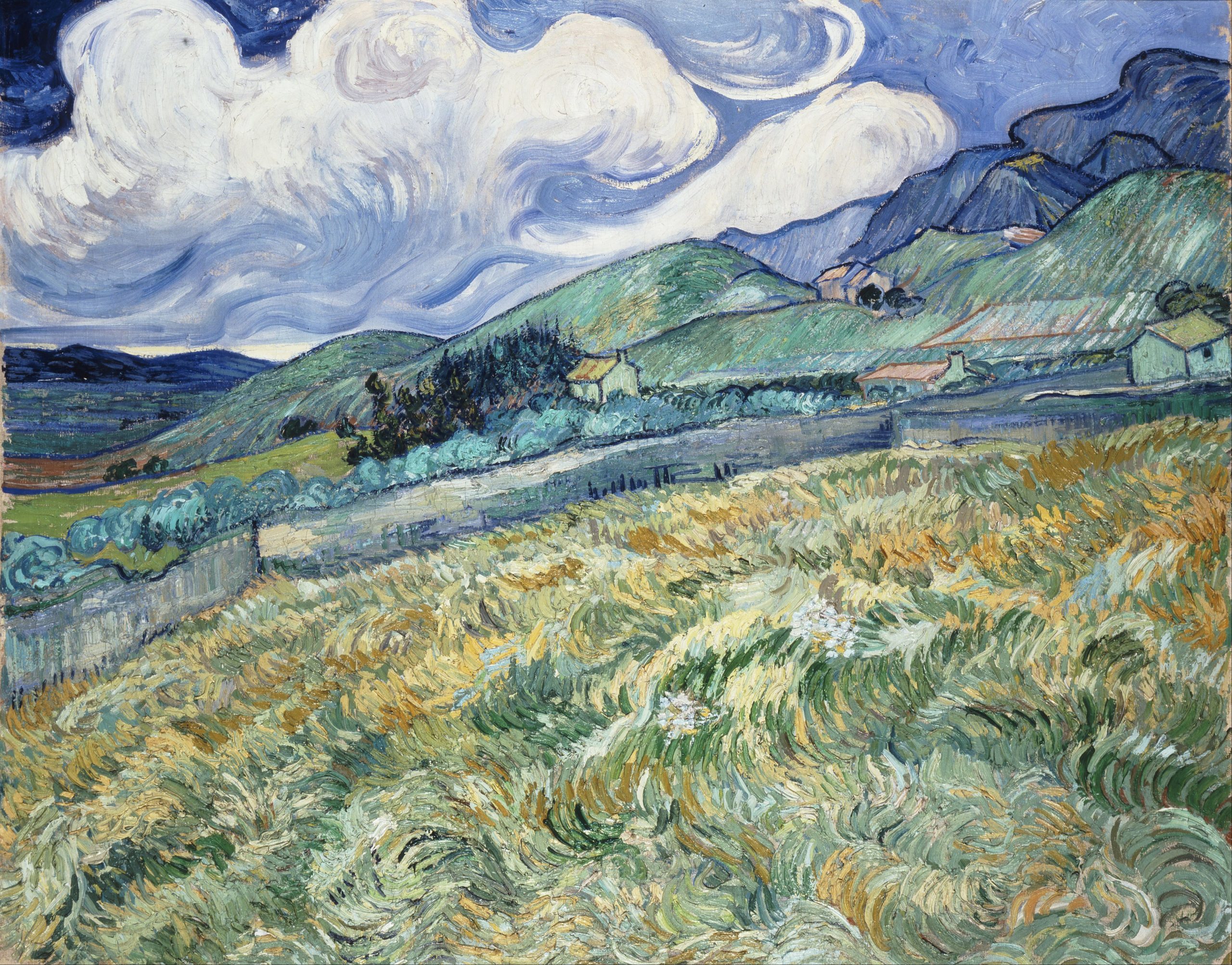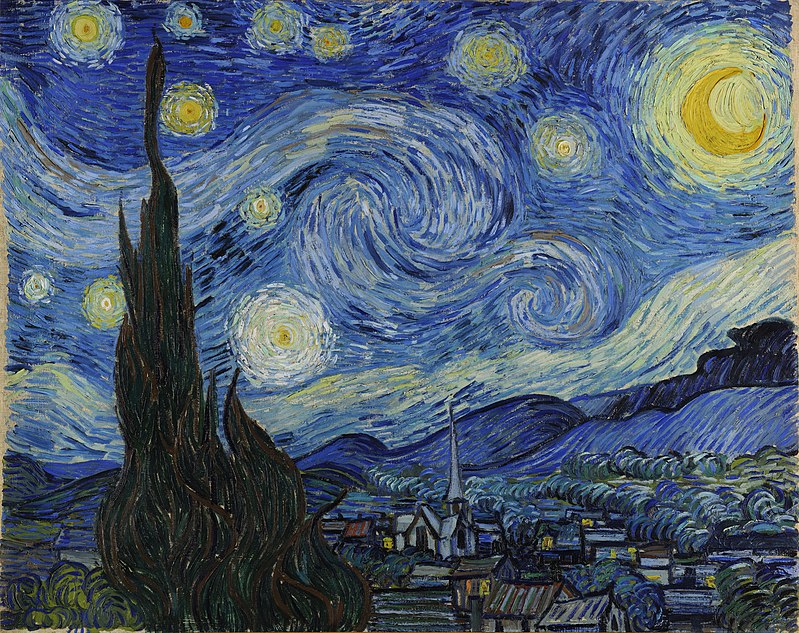Landscapes painted at Saint- Rémy
The Starry Night and Mountainous Landscape from St Rémy were both painted during Van Gogh’s time in the Saint-Paul-de-Mausole asylum at Saint-Rémy-de-Provence from May 1889 – May 1890. During this time he painted around 150 paintings, including 21 landscapes based on the view from his bedroom window, facing east, “Through the iron-barred window,” he wrote to his brother, Theo, around 23 May 1889, “I can see an enclosed square of wheat … above which, in the morning, I watch the sun rise in all its glory”. Van Gogh depicted the view at different times of the day and under various weather conditions, including sunrise, moonrise, sunshine-filled days, overcast days, windy days, and one day with rain. While the hospital staff did not allow Van Gogh to paint in his bedroom, he was able to make sketches in ink or charcoal on paper; eventually, he would base newer variations on previous versions.
The pictorial element uniting the landscape paintings is the diagonal line coming in from the right depicting the low rolling hills of the Alpilles Mountains, and in many of the paintings, cypress trees are visible beyond the far wall enclosing the wheat field.

One of the first paintings of the view was Mountainous Landscape Behind Saint-Rémy. Van Gogh made a number of sketches for the painting, of which The Enclosed Wheatfield After a Storm is typical. It is unclear whether the painting was made in his studio or outside. In his June 9 letter describing it, he mentions he had been working outside for a few days.
David Hockney talking about Van Gogh and landscapes
The Starry Night
The Starry Night is one of Van Gogh’s best known paintings, but despite the large number of letters Van Gogh wrote, he said very little about it. After reporting that he had painted a starry sky in June, Van Gogh next mentioned the painting in a letter to Theo on or about 20 September 1889, when he included it in a list of paintings he was sending to his brother in Paris, referring to it as a “night study. Of this list of paintings, he wrote, “All in all the only things I consider a little good in it are the Wheatfield, the Mountain, the Orchard, the Olive trees with the blue hills and the Portrait and the Entrance to the quarry, and the rest says nothing to me”; “the rest” would include The Starry Night.
Artrageous – introduction to the Starry Night at MOMA
Further information about The Starry Night from the Museum of Modern Art in New York https://www.moma.org/collection/works/79802
Interpretations of The Starry Night
Van Gogh compared the stars to dots on a map and mused that, as one takes a train to travel on Earth, “we take death to reach a star”. Although at this point in his life Van Gogh was disillusioned by religion, he appears not to have lost his belief in an afterlife. He voiced this ambivalence in a letter to Theo after having painted another of his night paintings, Starry Night Over the Rhône, confessing to a “tremendous need for, shall I say the word—for religion—so I go outside at night to paint the stars.”
Credits and further reading:
vincentvangogh.org/starry-night.jsp


